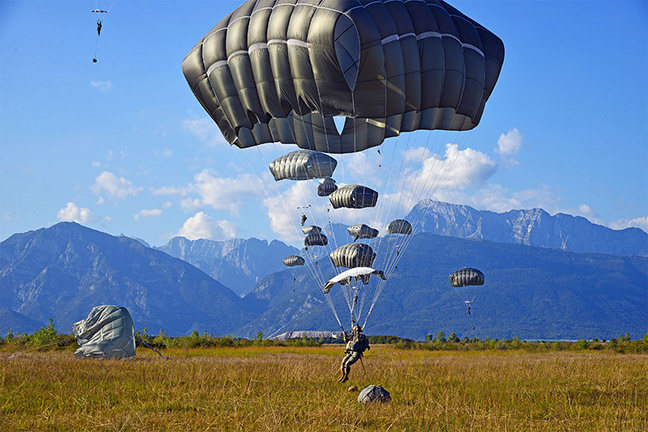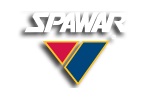The U.S. Army will soon release new contracts and a post-Milestone B solicitation as part of its shift to a system of systems approach for making sure warfighters have the position, navigation, and timing (PNT) information they need regardless of issues with getting the GPS signal.
The Assured PNT (APNT) approach incorporates multiple sensors and an open architecture into an integrated whole that is resilient and easy to update, explained Kevin Coggins, the direct reporting program manager for PNT.
The U.S. Army will soon release new contracts and a post-Milestone B solicitation as part of its shift to a system of systems approach for making sure warfighters have the position, navigation, and timing (PNT) information they need regardless of issues with getting the GPS signal.
The Assured PNT (APNT) approach incorporates multiple sensors and an open architecture into an integrated whole that is resilient and easy to update, explained Kevin Coggins, the direct reporting program manager for PNT.
"GPS alone is not our Army strategy to achieve PNT," said Coggins. "We’re going to use GPS and some innovative systems that employ other types of sensors or devices to allow us to have access and integrity of PNT information."
Within the overall system are things such as pseudolites, signals from other satellite navigation constellations, and, in particular, chip-scale atomic clocks (CSACs).
"I cannot tell you the benefit that we get from high-quality chip scale atomic clocks," said Coggins. "I can’t talk enough about that. It’s enormous."
Helping bring APNT to life is a service-wide integrated product team (IPT) that gathers together all the program executive office (PEO) officials , project managers, integrators, and requirements managers twice a year to work through issues in defining the architecture and the common operating environment components of Assured PNT. Their next meeting is August 30.
Spurring Industry Innovation
The Army has also been tapping into the creativity of industry through a series of prototyping contracts.
"The very first thing, we did a SBIR [Small Business Innovation Research contract] on the dismounted side," said Coggins. "A company named Yotta Navigation executed that SBIR and they did an outstanding job."
Yotta developed the DAPS or Dismounted Assured PNT System, a prototype that demonstrated open architecture capabilities on a device a soldier would carry," Coggins told Inside GNSS.
"They showed the ability to change out between two different vendors’ GPS cards,” he said. “They showed the ability to use different types of inertial sensors, the ability to use a chip-scale atomic clock — but in an open architecture. We could swap things around. They were showing us how small we could get it and what an architecture might look like for dismounted user."
Other contracts, this time for pseudolites, went to L3 and a team formed by DataPath and Rockwell Collins.
"Both have incorporated outstanding designs that help to address this question as well on the pseudolite side," Collins said. "We’re also doing some prototype efforts on the mounted side. We’ve done some with MITRE, who’s also delivered some outstanding capability. "
Two more prototyping contracts will be awarded in the next 60 days, he said, and a request for proposals is soon to be announced.
“All of these prototype efforts are helping us refine our requirements for a post-Milestone B engineering and manufacturing development contract that we’re going to let for assured PNT,” Coggins said.
Though Coggins’ team is still finalizing their approach though an industry day where they will discuss their strategy is set for August 2-4.
There is no question, though, that sustained innovation will be a big element in what they are planning to do.
“This competitive prototyping that we’re doing with industry, not only is it helping us figure out how to take this open architecture approach but it’s creating new opportunities for innovation,” said Coggins. "Now I’ve got a way, as I incorporate this architecture, for industry to continue to innovate and not stop innovation as I build this capability. That is huge. . . . I could be 10 years after my initial operating capability or my FOC [full operational capability]. I could be 10 years after that, and very easily, just like putting D3 in place of a DAGR [Defense Advanced GPS Receiver], drop a new card in a pseudolite or a new card in a mounted Assured PNT device and boost that capability. I can’t do that today with how I employ GPS."
De-Duping PNT
On his wish list, Coggins said, are reductions in size, weight and power — something where progress is already being made by reducing duplication. The new D3, that is the DAGR Distributed Device built by GS Source, is now being installed on the Army’s Armored Knight vehicle, he said.
"That’s a good news story in terms of how fast we were able to integrate this on an Armored Knight and how many GPS receivers we were be able to take off because of it," said Coggins. "Now we’ve got one PNT device on those platforms that are servicing up to eight clients. So, you can imagine now I can take off eight antennas, eight power cables, eight data cables, eight GPS receivers and have one PNT device that’s upgradable to M-code."
When M-code becomes available it will be just a matter of swapping out a card, Coggins said. "We’ll take four screws off the back of the D3, pull out the [Selective Availability Anti-spoofing Module] SAASM card, insert the M-code card, put the screws back and put it back on the platform. It will use the same data interface to the client. Then we’re done.”
Coggins said he wants PNT to be seamless and for warfighters to have it wherever they need it at a trust level they understand.
"We’ve got to look at capabilities beyond GPS, things that we might not have thought of that provide benefit to the war fighter," he said. "Right now we’re reliant on GPS alone. I want to shift off of that in very innovative ways. This competitive prototyping that we’ve done, it’s opened the door to a lot of new capabilities that, as a department, we didn’t think would provide us with the capability that we’re seeing—but it’s game changing. "






